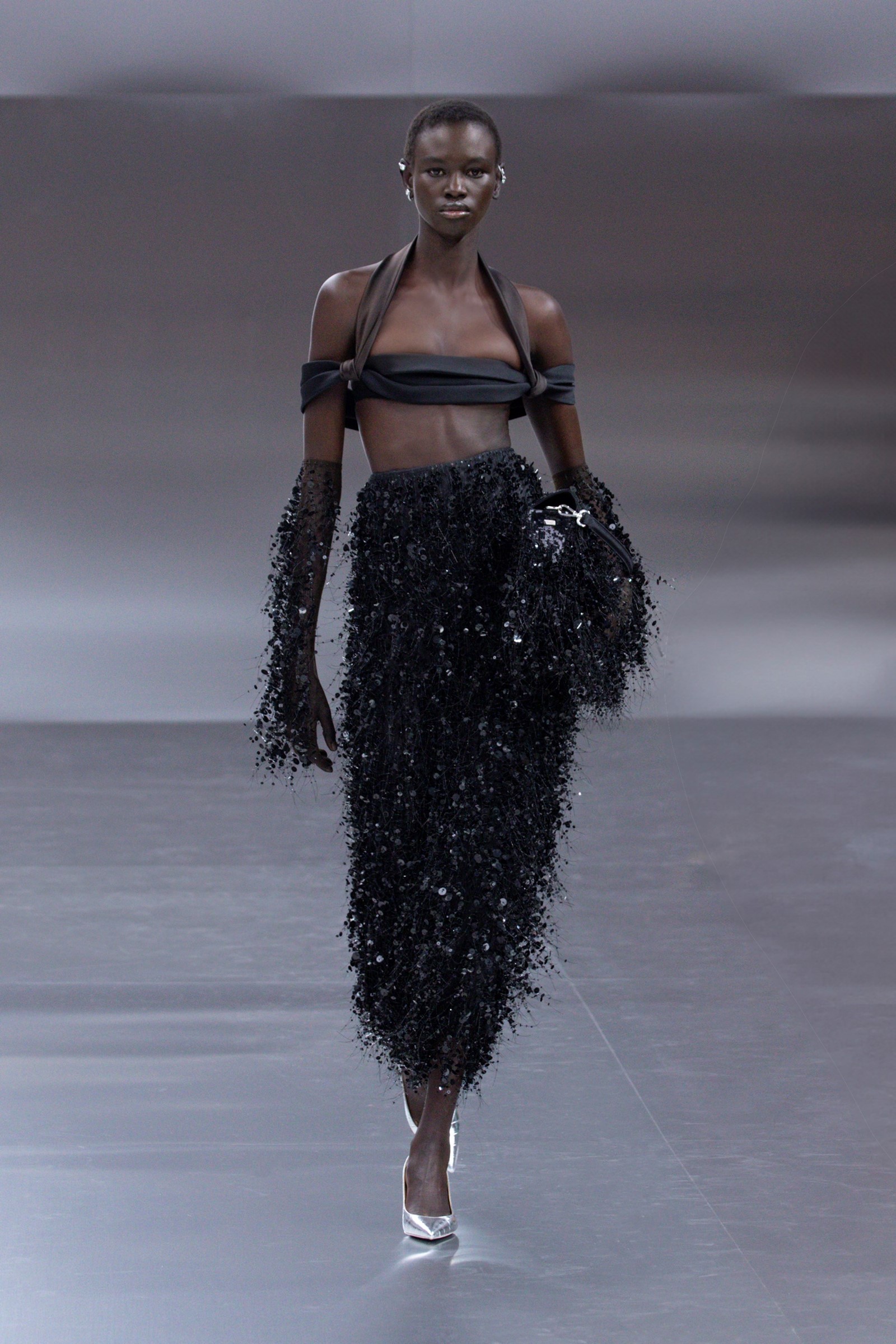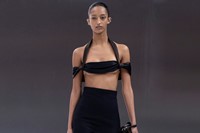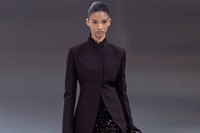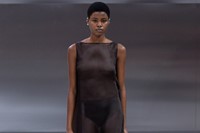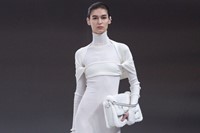In a cavernous space in the basement of its home in Rome – the Palazzo della Civiltà Italiana, a multi-arched monolith perched on a rooftop south of the city centre – Fendi’s archive holds about 12,000 pieces, painstakingly preserved. That’s not to mention the thousands of Lagerfeld sketches – it was common for him to produce five or six hundred for each of his collections in the 1980s, no idea ever exactly repeated. But Lagerfeld himself wasn’t into archives, nor looking or even thinking of the past. And, taking on that spirit of ceaseless adventure, neither was Kim Jones for his Spring/Summer 2024 Fendi haute couture collection.
Which, in the rarefied sphere of haute couture, bears mention. One of the reasons couture is special – and one of the reasons I love it – is because it is happily mired in its own past, a live connecting thread between the clothes of today and those of decades and even centuries ago, still made the same way. Tailors and seamstresses can trace their tutelage back through the hands of other houses – winding up, generally, with someone who actually worked for Dior (as in, Christian) or Balenciaga (as in Cristobal). And some houses even permit their best clients to order pieces from the past – the ever-popular retrospective fashion exhibitions becoming something of a Kays Catalogue for the hyper-wealthy to, perhaps, order a couture look from 35 years ago remade for them to wear to a summer wedding (I’m naming no mega-rich names, but this is actually a specific example). The ultimate greatest hits collection.
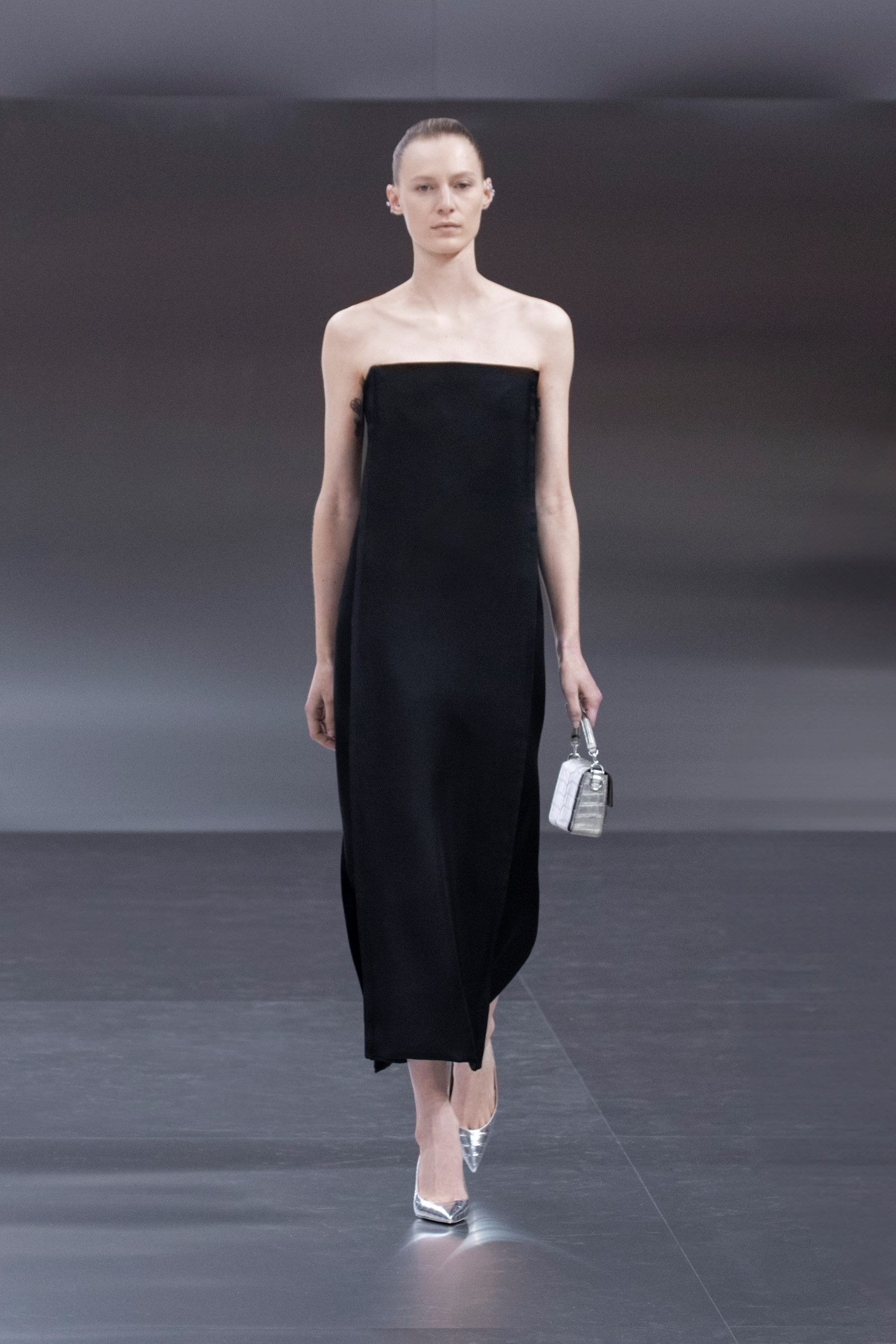
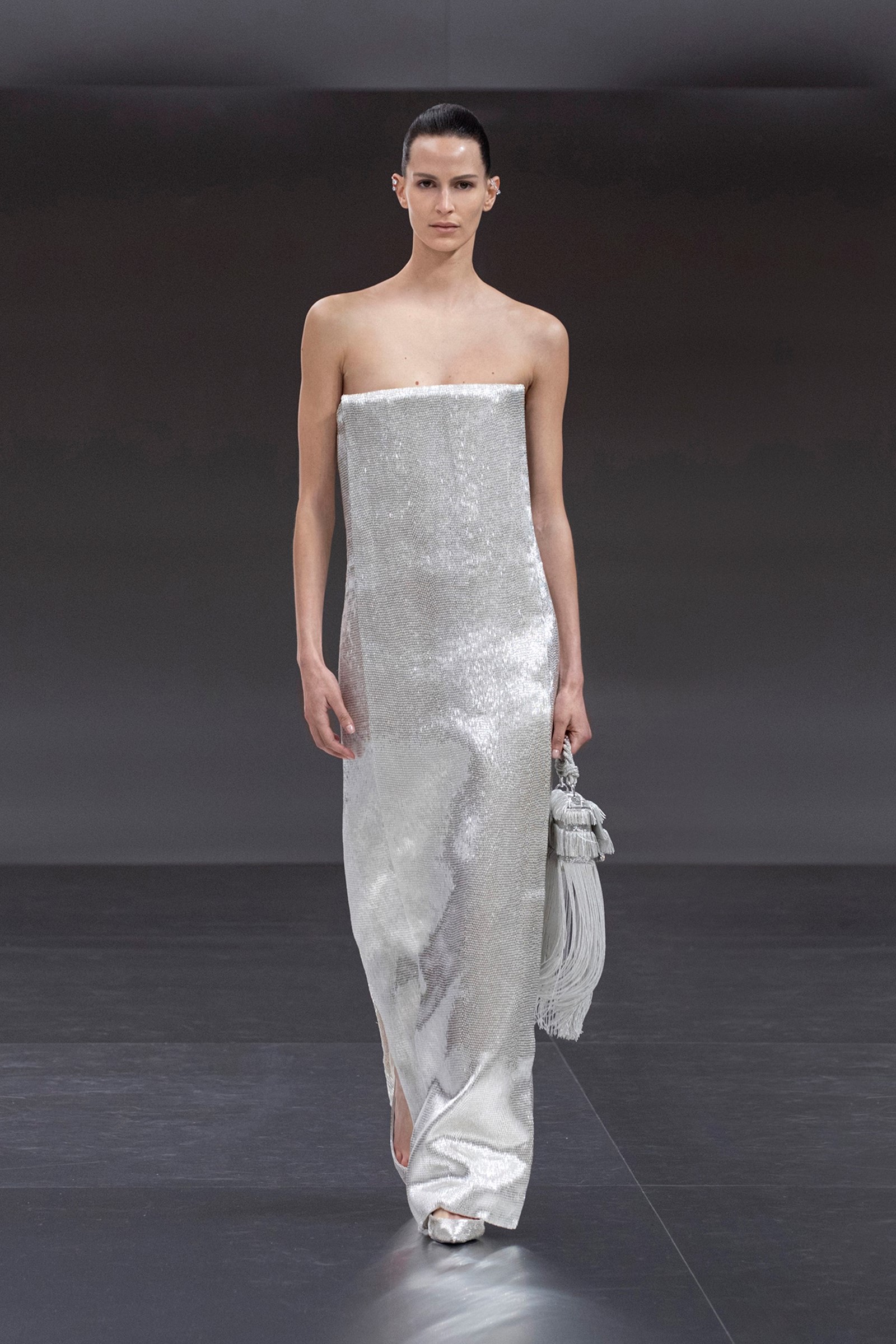
From his first Fendi collection, Jones has been carefully examining the heritage of Fendi, extracting its DNA and exploring its codes – Romanesque romance, a sexy slant of 70s via Antonio Lopez, strict tailoring nodding at Lagerfeld’s personal attire, and a universal luxuriousness in materiality. Jones has also rooted several of his Fendi couture collections in a more general past – in ideas of the Eternal City, both Renaissance and ancient, in the Bloomsbury’s groups cultural exchange with that Italian capital in the early 20th century, and in the elegant silhouettes of the 1930s, just after Fendi was born. But he’s also been inspired by Dune and spaceships, has had his models navigate a glassed-in hyper-modern labyrinth of vitrines and, of course, created his first few collections in the immediate post-pandemic climate of Zoom calls and remote working. Nothing could seem more modern.
This time, Jones’s collection was about future nurture. “I was thinking about Karl Lagerfeld’s futurism,” he said. “In the collection, there is a humanism at the heart of this future.” So, although pieces were scalpel-sharp, in glistening materials that sometimes shone with an almost eerie iridescence, there was a sense of the hand behind everything, too. The sharpness of tailoring, lapels turned up to slice around the throat, contrasted with the softness of their materials – even crocodile was lined in mink, to give a private envelope of tactility. The notion of fur – synonymous with Fendi – was reconsidered, with furry effects created through metallic paillette embroideries or waves of eyelash fringe. I’m loathe to say it’s the future of fur, but it certainly gave food for thought. And Fendi also didn’t oblige women to go naked before 5pm – the daywear, of slick knitwear, slender silhouettes, those crocodile coats and twisted harness-tops that Silvia Venturini Fendi dubbed “a new tuxedo” were quite knock-outs.
That idea, of a private preciosity, was wittily underscored by sunglasses executed by Fendi’s head of jewellery, Delfina Delettrez Fendi – daughter of Silvia – who embedded diamonds in the swooping, aerodynamic bridge of sunglasses. Each pair, she said, will be individually engineered to each client’s face using 3D technology – could couture be either more haute or more modern than that?
